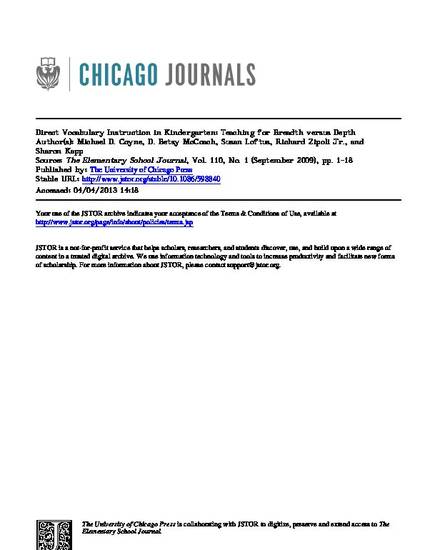
The purpose of this study was to compare 2 methods for directly teaching word meanings to kindergarten students within storybook readalouds that varied in instructional time and depth of instruction along with a control condition that provided students with incidental exposure to target words. Embedded instruction introduces target word meanings during storybook readings in a time-efficient manner. Extended instruction is more time intensive but provides multiple opportunities to interact with target words outside the context of the story. Participants included 42 kindergarten students who were taught 9 target words, 3 with each method. Target words were counterbalanced in a within-subjects design. Findings indicated that extended instruction resulted in more full and refined word knowledge, while embedded instruction resulted in partial knowledge of target vocabulary. Implications are discussed in relation to the strengths and limitations of different approaches to direct vocabulary instruction in kindergarten and the trade-offs between instruction that focuses on teaching for breadth versus depth.
Coyne, M. D., McCoach, D. B., Loftus, S., Zipoli, R., Jr. & Kapp, S. (2009). Direct Vocabulary Instruction in Kindergarten: Teaching for Breadth, Versus Depth. Elementary School Journal, 110(1),1-48. doi: 10.1086/598840
Available at: http://dx.doi.org/10.1086/598840

© 2009 by The University of Chicago. All rights reserved.